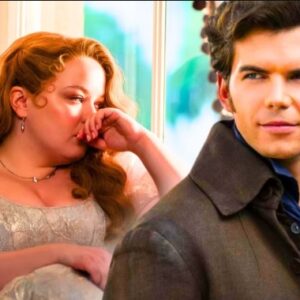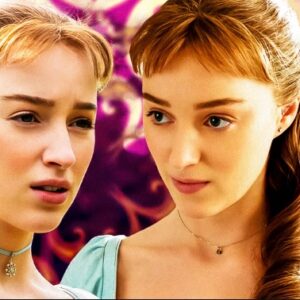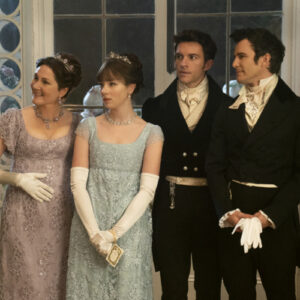House of the Dragon is returning for its second season. The show has changed a lot about the source book by George R.R. Martin, mostly for the better.
HBO’s flagship TV series House of the Dragon is coming back for its second season. While we don’t have a firm release date yet, word is it’s coming out in early summer, which I bet means we’ll get a May/June release, which is slightly later in the calendar year than when HBO usually chose to release Game of Thrones seasons back in the day.
House of the Dragon is based on George R.R. Martin’s book Fire and Blood, which was released in 2018. The novel is written as a fictional history of the Targaryen dynasty rather than in the same third-person limited style of Martin’s Song of Ice and Fire series. Fire and Blood spans roughly 140 ears of history in Westeros over the course of 700 pages. Because of its style, many details are glossed over or described only briefly. Martin purposefully keeps some things vague to keep with the conceit that the book is being written by an in-world historican with incomplete information.
In adapting this tome, the producers of House of the Dragon were forced to make several changes and elaborations. Adaptation can be a tricky enterprise, and the modern TV era is littered with series that didn’t make the jump as successfully as fans would hope.
Thankfully, House of the Dragon does not fall into this category. While not every change was liked by fans, some of the changes made were inspired and added depth and drama to an already good story. Improving on the writings of the legendary George R.R. Martin is never easy, but in a few instances, House of the Dragon managed it.
1. Alicent and Rhaenyra were best friends before Alicent marries Viserys
In Fire & Blood, Alicent Hightower and Rhaenyra Targaryen never had a friendship like the one portrayed in House of the Dragon. Unlike in the TV adaptation, in the novels Rhaenyra is nine years younger than Alicent when Alicent marries her father King Viserys at the age of 18. The book describes their relationship has “amicable” but that is all.
In House of the Dragon, the showrunners and scriptwriters made a deliberate choice to change this dynamic. Rhaenyra and Alicent are much closer in age, and share their youth together. In the first half of season 1, we see Rhaenyra and Alicent having lessons together, gossiping, and going memorably moon eyed over the young knight Criston Cole. Their friendship benefits the show enormously, giving a relatable emotional core to this story a family conflict that grows dangerously out of control. Each feels betrayed by the other. This is a vast improvement on the book, where their dynamic could easily fall into the ‘evil step-mother’ trope, with Alicent trying to displace her step-daughter in the line of succession in favor of her own children.
As season 1 ended with the brutal death of Rhaenyra’s second son at the hands of Alicent’s second son, it will be interesting to see how their old friendship plays a part in the drama to come.
2. The Royal Hunt and the White Stag
The third episode of House of the Dragon includes two major set pieces revolving around two of the shows main characters. First, we see Daemon Targaryen’s war for the Stepstones as he struggles to overcome the forces of the Triarchy and prove his worth as a military commander. It is visually spectacular and completely unsatisfying. In one of a few warning signs to come out of season 1, the battle for the Stepstones worryingly displays some of the failings of the final two seasons of Game of Thrones: plot and character development are sacrificed to set up a big-budget action sequence, leaving the watcher disappointed despite the eye-popping effects.
The other major set piece of the episode is the royal hunt to celebrate Prince Aegon’s second birthday. An upper-class class bash full of drama and cutting verbal barbs worthy of Downton Abbey, but with the fantasy genre flare in the form of a mystical white hart, the royal hunt proves far more satisfying than the climactic battle sequence. The politicking and court dynamics on display during the hunt put on display the high stakes world all of the great houses of Westeros must navigate. Not in the entirety of Game of Thrones were the consequences of passing comments and gossip so on display.
Throughout the scenes of the royal hunt, which is a show fabrication not present in the book, we see that following the birth of a male heir to Alicent and King Viserys, the lords of Westeros are seeking to change the line of succession. Rhaenyra is forced to suffer a proposal by Jason Lannister, an idiot, while her father is forced to display his weakness and impotency as the hunt culminates in his killing a stag that has already been tied up. The white hart, a symbol of royalty in pre-Targaryen times, appears only to Rhaenyra, who lets it go in an act of mercy.
Altogether, this scene does more for character development and world-building than any other sequence invented for the show.

3. Helanea Targaryen is a dreamer
Poor Princess Helaena, no one ever seems to listen to her.
The only daughter of Alicent Hightower and King Viserys Helaena Targaryen is described in Martin’s book as pleasant and friendly, but little more. House of the Dragon has clearly been building on that to a great degree, turning Helaena into a prophetic figure who drops tantalizing bits of foreshadowing for the audience. While the meaning of many of her utterings will only become clear after season 2 runs its course, her ability to predict the future is clearly exhibited with her brother Aemond. While he and Alicent discuss when Aemond will finally claim a dragon in Episode 6, Healena mutters in the background, “he will have to close an eye,” prophesying the drama in Episode 7 when he loses an eye confronting Rhaenyra Targaryen’s sons after mounting the dragon Vhagar.
Helaena again makes what seems to be a prophecy in Episode 9, when she cryptically tells her mother, “There is a beast beneath the boards.” Alicent doesn’t seem to know what she mean at the time, but she may be thinking back on this moment when, at the end of the episode, Rhaenys Targaryen emerges from beneath the floor of the Dragonpit to interupt the corronation of Helaena’s brother Aegon. Again, someone listen to this girl. And given what happens to Helaena in Fire & Blood, “there is a beast beneath the boards” may soon take on another meaning.
Helaena’s prophetic abilities are a brilliant narrative device that allows the writers to hint at what’s to come. It will be very exciting to hear what she gives us in season 2, and to see how her other mutterings from season 1 end up coming true. The producers should have her mutter a little louder for audience members hard of hearing though…

4. Baela and Rhaena are present when Aemond claims Vhagar
Episode 7,” Driftmark,” is one of the two episodes most frequently cited as the best of the first season of House of the Dragon. Starting as a solemn funeral for Daemon’s wife Laena Velaryon, the tension throughout Episode 7 builds steadily to a crescendo where the Alicent Hightower and Rhaenrya Targaryen, the Queen and Crown Princess of Westeros, engage in a knife fight, driven in large part by a fight between their children. Just before, Alicent’s son Aemond claims Vhagar, the largest dragon currently living, as his mount. There is a fracas with Rhaenyra’s sons and Daemon’s daughters when he lands, and Rhaenyra’s son Lucerys slashes out Aemond’s eye, something predicted by Aemond’s sister Helaena the episode before.
In the novels, the boys get in a fight over very little; before he claims Vhagar, Aemond pushes his 3-year-old nephew Joffrey into a pile of dragon droppings, and Joffrey’s older brothers Jace and Luke come to his aid. Boys aged 10 and younger will get into fights over the flimsiest of premises when not watched by an adult, and in a world where they all carry daggers, I’m sure many eyes would be lost. However, for such an important scene, where a prince loses an eye and the world’s largest living dragon gets a new rider, the novel’s premise for why the fight began seems extremely flimsy.
House of the Dragon managed to improve on the fight by firming up the character motivations. In the televised version of the same scene, Aemond claims Vhagar before the fight starts, and his nephews arrive after being woken in the middle of the night by their cousins Baela and Rhaena, who are alarmed at the ‘theft’ of the Vhagar, who was previoiusly ridden by their recently deceased mother Laena. Both girls and boys arrive on the scene and confront the victorious Aemond, who has just claimed Vhagar. He insults them relentlessly, leading to the fight.
The added character motivation that Rhaena, who also hasn’t claimed a dragon yet, is upset that Aemond took Vhagar AT HER MOTHER’S FUNERAL is much more satisfying to the audience and develops the characters more. It also underlines that Rhaenyra’s children are much closer to Daemon’s daughter’s in age than they are to their uncles, despite them all being roughly the same age.

5. King Viserys’ illness and his last stand
Episode 8 of House of the Dragon is lauded as the best installment in the first season. In a dynamic turn that only a Thrones show could pull off, the climax of the episode takes place in the throne room of the Red Keep, as an old sick man walks from one end of a room to another. The music swells and faces everywhere are shocked, simply shocked, to see that the ailing King Viserys is still alive and intends to sit the throne for the day. Many shows in the modern era possess big-budget action sequences. It’s the ones that can take these small, intimate character moments and make them feel as important as any battle that really shine.
Viserys’ heroic walk to the throne was the culmination of his character arc. In episode 8, “The Lord of the Tides” Hand of King Otto Hightower is seeking to undermine Rhaenyra’s claim to throne and put the legitimacy of her sons into question. A King who was pleasant and amicable who always promoted peace, but who deep down wished that he had been tested by war or some other calamity and could have forged a legacy, Viserys is forced to struggle through a debilitating, decades-long illness to stand up for his daughter. He does so, and the moment is truly inspiring.
Here’s the kicker: in Fire and Blood, Viserys isn’t really sick. He eventually does die in his sleep at the age of 52, and once had a life-threatening infection after cutting his fingers on the Iron Throne, but the 20-year long illness that slowly cripples him and ultimately ends his life was a show fabrication. And it was a brilliant one. In both the novel and television adaptation, Viserys is a neutral figure that is not on Team Black or Team Green, the two factions whose conflict results in a Targaryen civil war. By giving him something to struggle with, in this case an illness, the screenwriters added depth to the character and gave actor Paddy Considine something meaty to work with. This is actually my favorite change from the source material, and George R. R. Martin himself said he prefers Paddy Considine’s version of the character to the one he wrote in the book.
Overall, the screenwriters for House of the Dragon took what I think should be more popular approach to book adaptation, keeping almost everything the same together with a few calculated improvements to the source material. The few changes the showrunners made to season 1 I think were warranted, and it helped that there were only a couple of them. Stay tuned to see what changes happen in House of the Dragon season 2!
